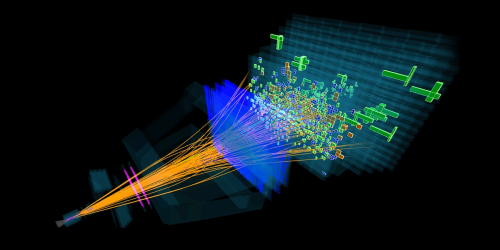• Physics 17, s142
A new analysis of B-meson decays strongly hints that they harbor physics beyond the standard model.
CERN
The three lightest B mesons consist of an antibottom quark paired with an up, down, or strange quark. Produced fleetingly in electron–positron colliders, B mesons decay via multiple pathways, several of which result in the production of and K mesons. Now Raphaël Berthiaume of the University of Montreal and his collaborators have developed a new theoretical framework that makes it possible to treat all 30 of the different B decays simultaneously [1]. When fed the latest experimental data, the framework reveals statistically significant inconsistencies whose resolution might require new particles, new fields, or other new physics.
Thanks to symmetries and conserved quantities, the 15 decays are linked in such a way that the parameters of one decay can be robustly inferred from the parameters of the others. Directly measured and inferred parameters could potentially disagree. Indeed, several inconsistencies (called anomalies) have been found (see News Feature: The Era of Anomalies). To examine what might be causing them, Berthiaume and his collaborators focused on flavor symmetry, a commonly used approximation that treats the three light quarks (up, down, strange) as the same. Assuming this simplification, the researchers could relate all the B-meson decay parameter to each other in a single matrix that was fit to data.
The team found an overall inconsistency between the parameters of the 15 decays that preserve the number of strange quarks and those of the 15 decays that do not. This discrepancy could be resolved by adding flavor-symmetry-breaking corrections, but the values the team found were roughly 50 times larger than expected from the standard model of particle physics.
–Charles Day
Charles Day is a Senior Editor for Physics Magazine.
References
- R. Berthiaume et al., “Anomalies in hadronic B decays,” Phys. Rev. Lett. 133, 211802 (2024).



